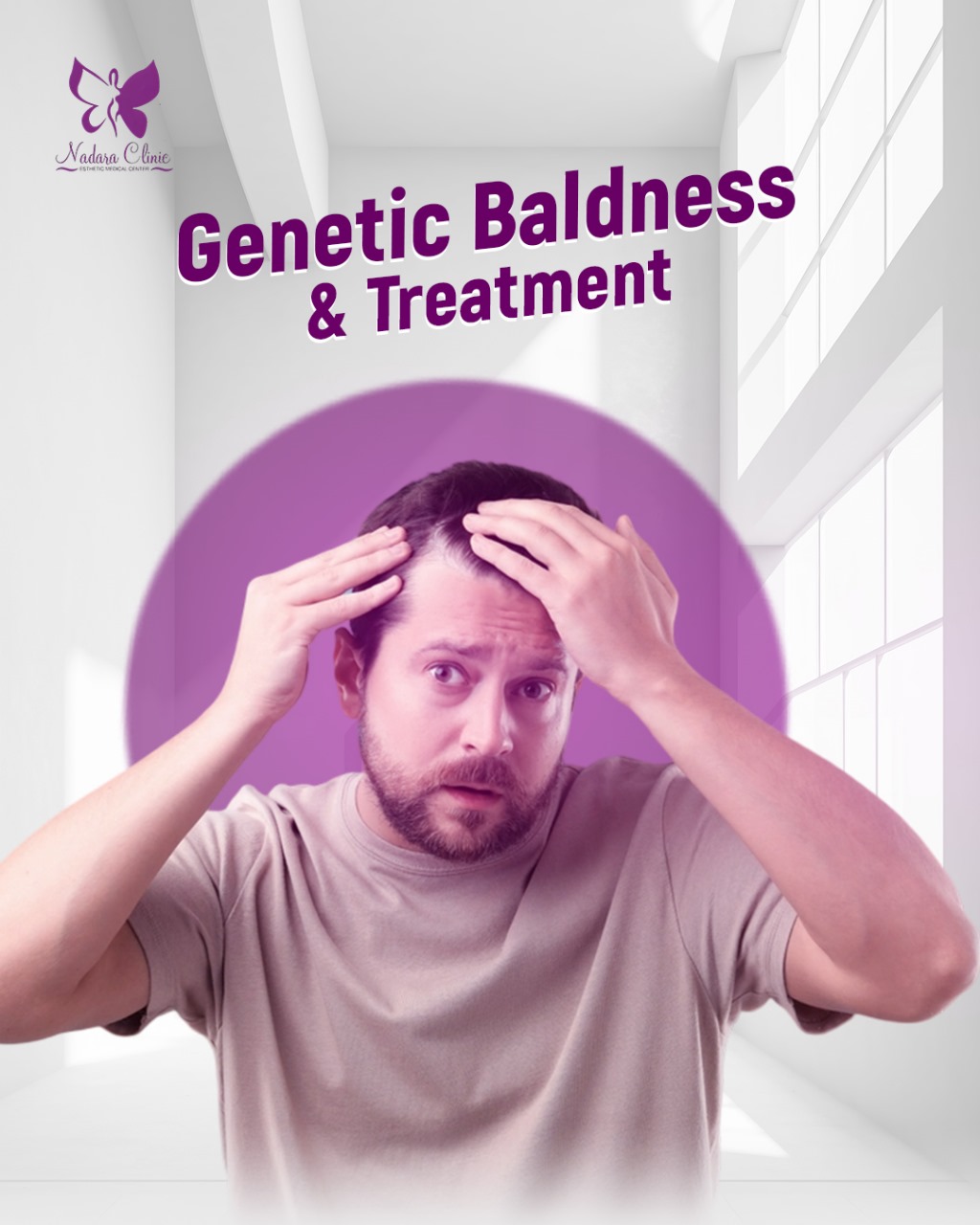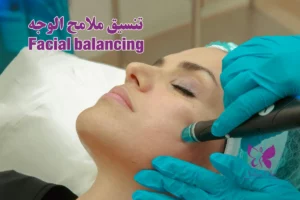Is your hair falling out profusely and causing you embarrassment? But you don't know why.
You could be suffering from androgenetic alopecia… The Freshness Center for Dermatology, Aesthetics and Laser in Hurghada offers the perfect solution for treatment, as the medical center includes the best dermatologists.
What is androgenetic alopecia?
Androgenetic alopecia is the most common cause of hair loss in both men and women.
It is not a disease but a natural condition that is caused by a combination of genetic factors.
Causes of genetic baldness
The hair growth cycle usually includes three phases and includes the following:
- Anagen phase
It lasts 2 to 4 years as approximately 90% hair grows in this stage.
- Catagen phase
The hair follicles shrink over a period of 2 to 3 weeks, which is called the transitional phase.
- telogen phase
Hair falls out at this stage after 3 or 4 months, after which new hair begins to grow, but when there is more hair loss than growth, baldness occurs.
A combination of genetic and environmental factors play an important role in hair loss.
Androgenetic alopecia in men is linked to androgenetic alopecia, as are several other medical conditions including:
- Coronary heart disease.
- Prostate enlargement.
- Prostate cancer.
- Insulin resistance disorders such as: diabetes mellitus and obesity.
- Hypertension.
This type of hair loss in women is associated with an increased risk of developing polycystic ovary syndrome (PCOS).
This condition is characterized by a hormonal imbalance that can lead to irregular menstruation, acne, increased hair places in other parts of the body, and it can also lead to weight gain.
In women, hormonal changes also lead to hair loss, especially after menopause, pregnancy, and childbirth.
Certain hairstyles can lead to hair loss called traction alopecia, and the loss is permanent or temporary.
Causes of hair loss that lead to baldness in men and women
- Trichotillomania, a mental disorder that causes the urge to pull hair.
- Changes in hormone levels Thyroid.
- Certain medical conditions such as ringworm infections and cicatricial alopecia.
- Medicines and supplements used to treat depression, gout, and arthritis.
- Radiation therapy used to treat cancer.
- Iron deficiency anemia.
- Stress. Long periods of physical or mental stress can lead to temporary hair thinning.
- Not getting enough protein or other essential nutrients like zinc can negatively affect hair growth.
You can also read : Hair loss treatment.
Risk factors for androgenetic alopecia
Researchers are studying risk factors that may contribute to this condition, but most of these factors remain unknown.
This type of hair loss is related to hormones called androgens, especially an androgen known as dihydrotesterone (DHT).
These androgens are important for normal male sexual development before birth and during puberty, as well as regulating hair growth and sex drive.
Recent studies suggest that androgenetic alopecia is caused by differences in only one gene, which provides instructions for making a protein called the androgen receptor (AR).
These receptors allow the body to respond appropriately to DHT as well as other androgens.
Genetic differences lead to increased activity of androgen receptors in hair follicles.
But it's still not clear how these genetic changes increase the risk of hair loss in men and women with androgenetic alopecia.
You can also read : Hair plasma sessions.
Symptoms of Androgenetic Baldness
Androgenetic alopecia begins with hair thinning and then often progresses to complete hair loss in parts of the scalp.
In men, this condition usually appears at the temples and the front of the hair and is known as male pattern baldness.
The hairline recedes and over time forms an M, often progressing to partial or complete baldness.
In more advanced cases, only a portion of the hair is left along the side and back of the scalp.
Hair loss in women differs in that it is more prevalent, most often affecting the top of the head down the middle.
The hair becomes thinner all over the head and the hairline does not recede, and alopecia in women rarely leads to complete baldness.
treatment
The most common treatments for male or female pattern baldness include the following options:
First: medicines
They are as follows:
- minoxidil (Rogaine)
It is a drug that can be used by both men and women, and the treatment may take at least 6 months to promote hair growth.
- Finasteride (Propecia or Proscar)
This medication, which is prescribed by a dermatologist at the Freshness Center for Dermatology, Cosmetic and Laser in Hurghada, treats hair loss in men.
It works to regrow hair or slow down baldness.
- Spironolactin (Aldactone)
Used to treat female pattern baldness, it also reduces the production of androgens which can block the effects of DHT as it works on hair loss.
- hormone therapy
Estrogen and progesterone therapy during menopause may help slow hair loss in women.
Second: other treatments
- laser treatment
Sometimes you need to resort to laser treatment for androgenetic alopecia if medications do not give the desired results, according to the instructions of your dermatologist.
It is used for males and females through low-energy light pulses and also works to stimulate and stimulate hair follicles.
- Protein-rich plasma (PRP) injection.
Platelet Rich Plasma is used in the treatment as it is concentrated and injected into the areas of hair loss, which may contribute to hair growth.
- Hair Transplant
The doctor removes the existing hair and re-inserts the hair into the bald spots on the scalp.
You can read more about: Hair transplant in Egypt
Can hair loss that causes genetic baldness be prevented?
It is not possible to prevent baldness caused by genetic factors, but you can reduce the incidence of hair loss by following these tips, which include the following:
- Changing hairstyles that can damage hair follicles.
- Limit heat damage, as styling tools such as curling irons can contribute to root damage.
- Massaging the scalp, which contributes to promoting hair growth, but it is taken into account that constant rubbing and pressure on the follicles leads to damage.
- Follow a healthy diet.
- Quit Smoking.
- Use a cooling cap if you are receiving chemotherapy.
- Eat adequate amounts of fatty acids such as Omega 3omega-6, as well as antioxidants.
- Getting enough rest, reducing stress, and exercising will maintain your overall health and the health of your skin.
Finally, if you are concerned about androgenetic alopecia, talk to a dermatologist at Nadara Skin, Cosmetic and Laser Center in Hurghada.






